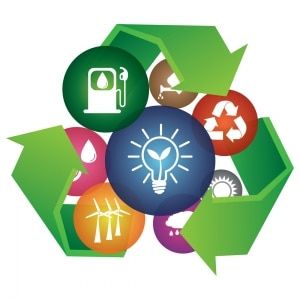Top Tips For Maintaining A Green Workplace

People are becoming increasingly aware of the environmental impact of their activities. A survey conducted worldwide in 2014 found that
more than half of consumers were willing to pay more for services and goods from companies with good environmental policies
. By implementing eco-friendly practices into your business, not only will you do your bit for the environment, but you will be helping your profit margins. Bear in mind that if you publicize yourself as being environmentally friendly, it is extremely important that you do what you say you do. Deceiving your customers by ‘
greenwashing
‘ them (false sustainability claims) may be worse than not doing anything at all.
So what can you do to maintain a green workplace? Let’s take a look.
Train your staff on sustainability principles
Everyone in your workplace, whether customer-facing, in an admin role, or doing manual work needs to understand the principles and methods of sustainability, or they will never be fully implemented. Think about having a Certified Energy Manager (CEM) staff to keep an eye on your systems, energy costs, and conservation initiatives. A CEM can help you optimize the energy performance of your workplace
Practice preventative maintenance
Don’t wait for a piece of equipment to break down before maintenance measures are implemented. Regular inspection, lubrication, and replacement of parts will keep equipment running at peak efficiency. By tracking the trends in reliability, risk factors, and energy use over time, you can stay ahead of the challenges, identify assets that are energy drainers and find ways to reduce your business energy consumption. Asset management software with predictive maintenance capabilities can be useful for automating the process and keeping you on schedule for things such as your air compressor service and repair . Not only does this help you to achieve your sustainability goals, but will lengthen the lifespan of your equipment and machinery and save you significant money in the long term.
Reduce your single-use product consumption
When you are busy in the office or workplace, it can be tempting to have all the convenience items, from single cup coffee pods to plastic cups that are thrown away after one use. We now know that single-use plastic is one of the most critical challenges affecting the environment at the moment, so if you can reduce it, you are well on your way to helping. Buy in some cheap, branded mugs and encourage the use of them, and deploy a water fountain with paper or reusable cups instead of plastic bottles.
Reduce water consumption
Make sure all of the dripping slides and leaks are fixed as soon as possible and install low-flow toilets and faucets in the restrooms. If you have sprinkler-watered gardens, look at changing to a drip system to reduce water wastage and have rain sensors so that they are not used unless necessary.
Use cloud computing software
Cloud computing has many advantages for small businesses, but when it comes to trying to be a little more environmentally friendly, it can make an enormous difference. First, it lessens the need for expensive servers to be purchased and managed. Second, it allows your employees to work from home, and thirdly, with everyone able to access documents digitally, there is less need for hard copy printing.


